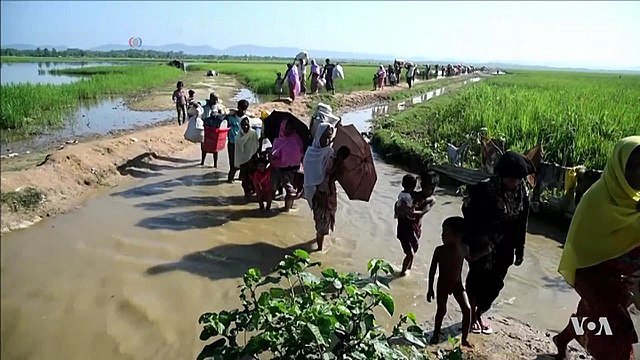The Commission for International Justice and Accountability (CIJA) released its long-awaited report Thursday on the Rohingya genocide in Myanmar. CIJA began its investigation in 2018, looking for evidence to clear a path toward international criminal prosecutions. CIJA has previously worked in Syria, gathering evidence on Bashar Al-Assad and IS.
According to the UN fact-finding mission in 2018, crackdowns on the Rohingya ethnic minority began in the Rakhine region of Myanmar in 2017. Refugees have described widespread massacres, sexual violence, and other crimes against humanity throughout 2017. The UN used satellite footage to show the many villages that were burned, allegedly via arson. The current military junta in Myanmar claims these burns were committed by the Rohingya themselves. However, documents and testimony obtained by CIJA dispute this.
CIJA found 865 documents, initiated 10 interviews, and gathered 24 videos and over 3,500 files in total from military and border personnel insiders. The insider documents consistently refer to the Rohingya as “Bengali,” a reference to the false belief that the Rohingya aren’t really Burmese but actually Bengali invaders. The documents show a government effort to reach out to extremist Buddhist monks in the region to garner support ahead of the 2017 attacks, which the government referred to as “area clearance.”
One military presentation obtained by CIJA refers directly to potential global condemnation for the military’s actions. It specifically refers to the Responsibility to Protect Doctrine, which requires UN member states to step in if there is a risk of genocide, war crimes, ethnic cleansing, and crimes against humanity. The presentation asserts if other countries step in, Myanmar will become a “failed state.” It goes on to claim that, “[d]espite pressure from the UN and international community on the military regarding the issues in northern Rakhine and demands on the Myanmar government to accept Bengali refugees [the Rohingya], there is no likelihood of R2P being triggered and violating Myanmar’s sovereignty.”
The documents were also able to show a clear bureaucratic structure in the Tatmadaw, the military branch that carried out the 2017 operations. According to CIJA:
Document after document revealed the intrinsically bureaucratic character of the Tatmadaw, where senior commanders maintained a detailed awareness of all subordinate activity, controlling every aspect of decision making and operating procedures. Lower-level commanders were not trusted to make improvised decisions on the battleground, meaning that actions were always approved by the highest echelons of the armed forces.
Reuters has independently corroborated much of the CIJA report, lending it further credibility. The report has been sent to the International Criminal Court (ICC) for further action. While Myanmar is not an official ICC member state, many of the Rohingya refugees have fled to Bangladesh, which may give the ICC jurisdiction, as Bangladesh is a member state.
Myanmar’s military junta has yet to respond to the report.


